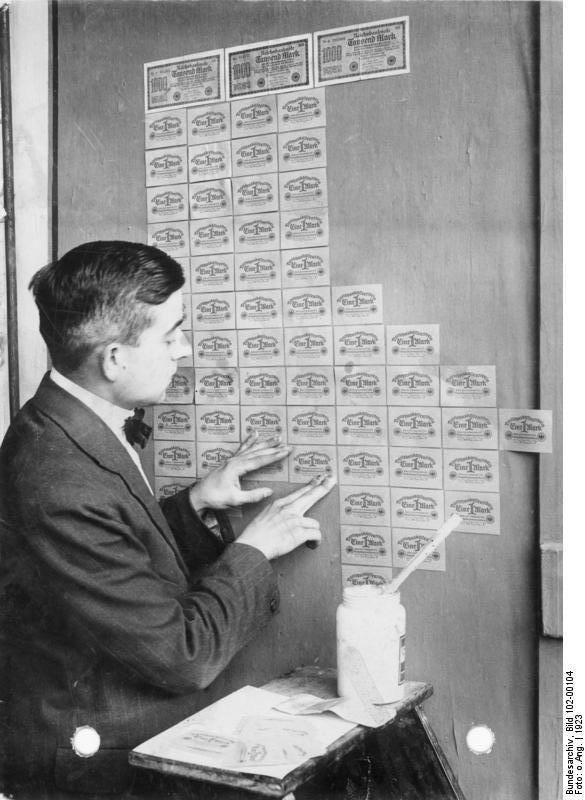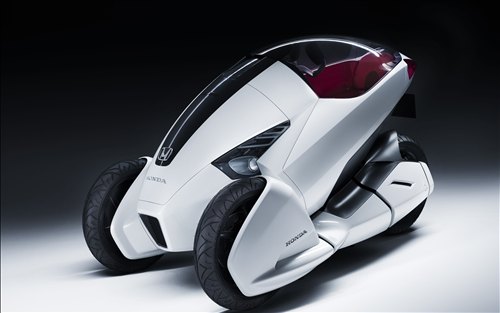A lot of road safety messages these days focuses on speeding. This always rubs me the wrong way, because while there is a kernel of truth it is smothered in a giant pile of lies.
When we get a new TAC ad about speeding, the message is
invariably that speeding is what kills people on the road. We have had this drilled into us for so long now that people are in real danger of thinking that speeding is the
only thing killing people on the road. This couldn't be further from the truth.
Most people think speeding is travelling at
any speed greater than the limit on the road. It's what the TAC lead drivers to believe speeding is. This is a simple lie: speeding is actually "
travelling at any speed greater than the safe speed for given conditions". Almost no drivers know this, even though the road safety campaigns actually assume it. That is, they say "speeding", meaning "travelling too fast for conditions
regardless of limit" and drivers think
"travelling faster than the limit". This dissociation between the message and its perception is actually causing a lot of accidents. People are dying because of speeding ads.
There are a number of reasons for this and I really don't want to bore people so I'll go through them fairly quickly.
First, false sense of security. On a road where the posted limit is 60, 60 may well be a safe speed in the dry, with little traffic and plenty of ambient light. It is unlikely to be a safe speed when the road is wet during a dark rush hour. Because drivers are constantly told that 1 km/h over the limit makes you a dangerous criminal, they increasingly tend to drive at the posted limits even if it is hazardous to do so.
Second, rigid speed adherence diverts driver attention. The less time you spend looking ahead for possible hazards, the more likely you are to have a crash. If a child walks into the road from behind a tree while you are looking at your speedo for 0.5 seconds, it will take you nearly a full second to respond to the hazard. The need to maintain exactly the speed limit makes you look at the speedo a lot more than normal, diverting attention that should be used to assess road conditions, forecast other drivers' behaviour, and thinking about possible hazards.
Third, reluctance to brake. If people are restrained under good conditions from travelling at a safe speed that is higher than the posted limit, this causes reluctance to waste time driving at any speed below the limit even if conditions demand it. This may sound the same as number 1, but it's quite different. Holding people back in this way makes them slightly tense, and to save time they will travel at the posted limit if at all possible. It also causes more aggression on the roads because these drivers are often held back by slower moving traffic. This aggression causes more reckless use of speed, more tailgating, more red light runs. An angry driver is a bad driver.
Speed is a factor in all accidents. Think about it: you cannot have a crash if you and everyone else are stationary. Faster crashes are more deadly than slower ones. These are facts and I really don't mean to talk them down, but the primary
cause of accidents is not speed itself. It is driver error and driver inattention (which is really in the set of all things that can be described as "driver error"). Thus the main way to reduce fatalities is to improve driver behaviour, not slow everyone down by force. I really want to talk about driver attention because this is the one that is
hit hard by rigid speed enforcement measures, and is
causing a lot of accidents that are actually put down to other things like texting, using a mobile phone and the like.
When a driver is forced by speed enforcement to travel slower than the speed he knows he can safely drive at under the conditions, something amazing happens:
he gets worse. The attention needed to keep the car going in a safe way is reduced, so the driver will feel as if he has some brain power to spare. The mobile phone, the stereo, daydreaming, all of these things will start to appeal because
it feels safe. We all know, because we have been told over and over, that using a mobile phone while driving is extremely dangerous. So why do people still do it? The reason is because it feels safe. And if something feels safe, who are the police to tell us not to do it, eh? Now, it may be safe to use a mobile phone from the perspective of brain power at the moment, but in the next moment there might be a hazard, where the driver's workload will increase dramatically, sometimes beyond his capacity, and a crash will occur. It'll be put down to him using a mobile, but the real cause is excessive driver workload. The second problem of all this is that to use the phone, radio, etc. the driver's eyes are directed away from the road, further decreasing the time to respond to any hazard.
All of that was by way of exploding the myths surrounding road safety. If you've read this far, congratulations, you're a star. Now I want to start talking about how real drivers in the real world can improve the safety of their own driving. We know it's not about the number your speedo's needle is pointing to, so what is it?
The attentive reader will have guesed by now that increasing driver attention is the fastest, most effective way to increase road safety. However, we cannot increase the attentiveness of every driver, more's the pity, so we need some other strategies that, once our own attention is at its peak, will allow us to stay safe even if other drivers are not.
To help with this analysis, let's have a look at the most common types of accidents. I got all of these from the ADTA's
website.
1. Same direction, AKA rear end collision. Cause: inadequate following distance. Solution: increase following distance. Monitor the following distance of cars behind you. If they are too close, do what you need to to let them pass or move to another lane.
2. Adjacent direction, that is, failure to give way to traffic at a crossing or T-junction. Cause: oncoming cars obscured, carelessness. Solution: Do not assume that a driver waiting to turn into your direction has seen you. Prepare to brake if you see cars waiting to enter your traffic stream.
3. Opposite direction. Usually people turning across traffic misjudging the distance to the oncoming car. Cause: same as 2. Solution: same as 2. Stay alert and be prepared to brake.
4. Off path in a curve. Cause: understeer (due to excessive speed), object fixation (more on that later). Solution: approach unknown bends with a large speed safety margin. Keep eyes to the road ahead, not objects on the roadside.
5. Off path on a straight. Cause: inattention, failure to respond to hazards. Solution: use speed consistent with roadside visibility.
It should come as no surprise that the first 3 most common kinds of accidents result from the assumption that all drivers will drive perfectly at all times. When someone does something unexpected on the road this results in an accident if there is a nearby car that doesn't anticipate or see the action. This is why "anticipation" is one of the key safe driver skills. Most drivers will assume that a green light is 100% safe. This is not the case, since red lights are sometimes run even quite far into the cycle, and since no driver anticipates a green light to be unsafe, this often results in a very severe accident.
The other two accidents are harder to analyse.
My theory on 4 is that people will try to take a turn a little too fast, and either panic when the understeer comes, or panic that it "feels too fast", fixate on an object at the side of the road like a tree or power pole that they are trying to avoid, and as a result, hit it. This is called target fixation and it is extremely dangerous. Some bends have a very bumpy surface and this will dramatically decrease the safe cornering speed. Be alert for such changes in surface.
5 is most likely some sort of swerving incident from a perceived hazard, or simply driver inattention for such a long time that the car leaves the road partially and the situation becomes unrecoverable. It is well known that straight roads lead to driver inattention accidents, so arm yourself with this knowledge and stay alert on the boring stretches.
Now that we have some background on the types of accidents that are likely to happen to you and the sorts of thins that can be done to avoid them, we are in a position to put the skill set forward.
This motorcycling website has done just that. Obviously some of the techniques are rider-specific because a car is dynamically not the same as a 2 wheel motorbike, but a lot of it translates.
I'm tired of typing so I'm going to quote en bloc. Here's what they have to say:
Emergency Braking.
Emergency Braking is an obvious survival skill. In a crash situation one needs to be able to scrub off speed fast to either avoid crashing into something or to reduce the severity of the impact.
A less obvious fact about emergency braking on a motorcycle is that poorly implemented emergency braking can itself cause a crash. In a crash situation in a car, locked wheels simply reduce the extent of speed reduction. On a motorcycle, locking a wheel (and especially the front wheel) is likely to cause the bike to go out of control and the rider to crash.
In cars of course we often have ABS which despite its reputation is not primarily to allow you to stop shorter, but to allow you to maintain steering control under emergency braking. The fact that it stops you a bit shorter is nice but the main accident problem is skidding into the obstacle.
Direction Perspective
The eyes play a major role in the control of a motorcycle. On a motorcycle, where you look is where you go and, to establish your direction perspective, the motorcyclist must use his eyes correctly. The way the rider uses his eyes also plays an important part in anticipating the actions of other vehicles around him and in the messages he sends to other motorists in conflict situations. Target fixation is also part of this. The rider who looks at the roadside furniture s/he is trying to avoid is sure to hit it!
I've kind of mentioned this one already. You drive where your eyes tell you to. This is below the level of the concious, so be aware of it.
Manoeuvre Anticipation
Anticipating what a vehicle is likely to do in a conflict situation involves a number of skills, many of them quite complex. Yet, looking at the most common motorcycle/car crash situations, the NZMSC discovered that there were a small number of anticipatory skills which, when carried out in a specific order, enable the rider to anticipate the likely actions of the driver, the movement, and speed etc of the car. Knowing this skill and implementing it enables the rider to get early warning of the actions of errant motorist and thus avoid impact with the offending vehicle.
No comment required.
Crash Survival
Sometimes, no matter how good the rider is, he will be invited to join someone else's crash and will be unable to decline the invitation. Where a rider crashes, there is a specific set of actions and reactions the rider can make that will greatly reduce the chances of being seriously hurt in the crash. A simple example is where the bike slides out from under the rider. In this situation the rider should always try to slide rather than tumble. This way he can see where he’s going, he can use his hands and feet to steer away from danger, and his body will not tumble with the extremities at risk of snapping as they impact with the ground or parked cars etc.
Some comment required. Obviously a crash in a car is very different from a motorcycle crash. Before the crash, try to steer into something soft or an area of open ground. It is better to drive into some field than stay on the road but hit someone who pulled out without looking. When the crash is over your lower legs will probably be broken, if it's a forward crash. Try to leave the car to avoid dying in a fire.
Risk Management.
A modern management tool in big business, risk management is the skill of identifying risks, calculating their severity, deciding whether one wishes to carry that risk and, if one doesn’t, how to counter that risk. Risk-taking is, to a certain degree, part of the motorcyclists' psyche, be it when riding a bike or having fun at the casino. But most motorcyclists are still interested in managing that risk. They do this by identifying the risks in riding (for example, the risks of riding fast in a specific location) and deciding whether that risk is one they are willing to take. Most riders, until taught this skill, do not even consider the risks involved in riding in any logical way. Either the risk is considered as a whole (the risk of riding a motorcycle) and, as a whole is too large to make an informed decision upon (and is thus filed in the Too Hard basket of the rider's brain), or is unfocused, in that riding in one particular location at an excessive speed is not considered as a speed pertinent to that location but as the speed "I normally ride at". When given some basic pointers on the ways to use risk management in one’s riding, the rider is, for example, more likely to be selective in his speeding and to take a sensible and considered approach to risk.
The advantage of risk management is that it is a process which is perceived by riders to be a professional process and a process that allows the rider to make his own value judgements in its implementation, such as the judgement of the extent of risk the rider is willing to expose himself too. Personal value judgements like these are amenable to change through social and peer pressure and, with the psychological make-up of the motorcyclist, the best safety improvements are achieved if the rider moves to a safer riding style voluntarily rather than through a legislatively-imposed system.
The same website has a whole
article on risk management and I do urge you to go read it.
To finish up, all road travel invloves risk. Whenever you get into a car, you accept that risk consciously or unconsciously. Governmental campaigns to decrease "speeding" do nothing about the risk, just the severity of the accident. If we follow that to its logical conclusion, we should ban everyone from the roads to avoid road deaths. But we get in cars, and take risks, every day, because driving makes our lives better. We have a way to make it safer as well: increase driver skill. If we increase our own proficiency, and counsel our friends and family to do the same, we can dramatically reduce the risks to us and our loved ones, all while using speed safely as 99.9% of drivers do, every day of the week.


























